Contents
- Why Nature Matters More Than Ever
- Defining Modern Biophilic Design
- Benefits of Nature-Infused Workspaces
- Core Pillars of Biophilic Office Design: Practical Applications
- Key Elements and Strategies
- Biophilia’s Impact on Business Outcomes & ESG
- Innovations and Trends in Biophilic Workplaces
- Adapting to Different Office Environments & Budgets
- Implementing Biophilic Design Effectively
- Actionable Steps for Transformation
- Cultivating a Thriving Future of Work
Why Nature Matters More Than Ever
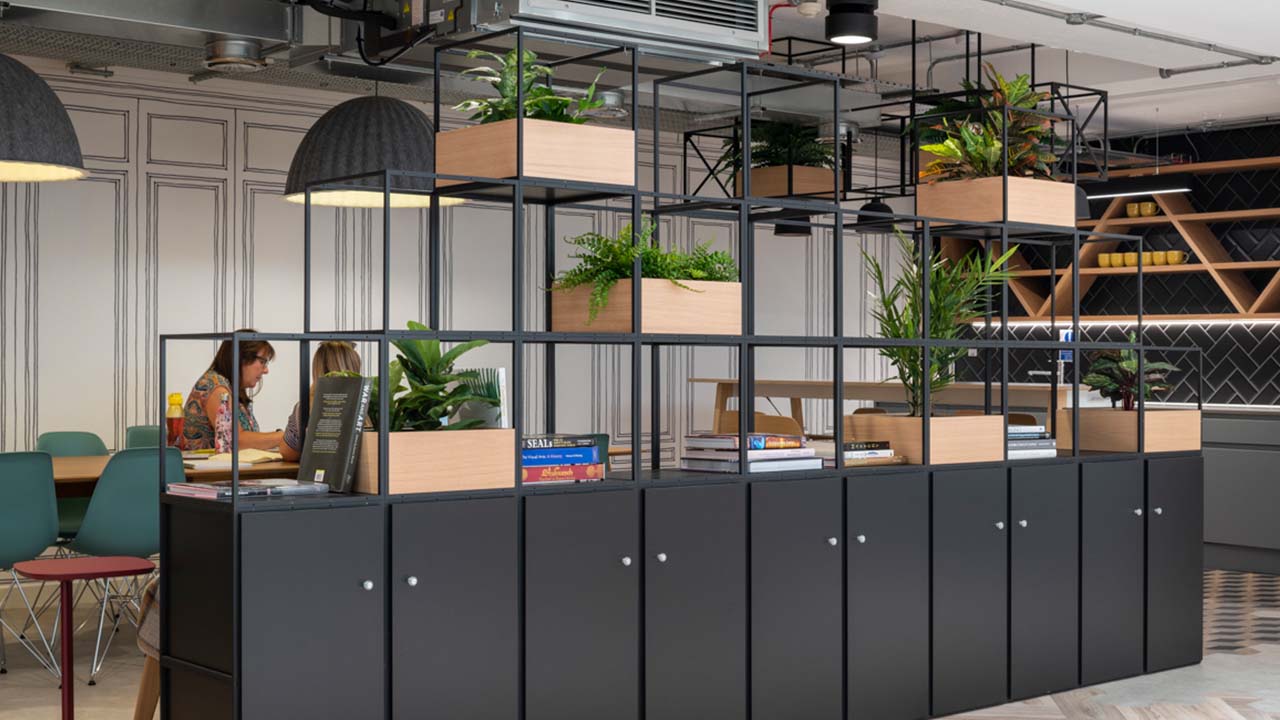
The workplace in 2025 has evolved beyond rows of desks and fluorescent lighting. Companies now recognise that employee well-being is fundamental to productivity, creativity and engagement—and are becoming more flexible in working arrangements, making offices more amenable for those traveling in.
The concept of biophilic office design—our innate human affinity for nature—provides a powerful lens through which to reimagine workspaces. This is far from a passing trend. It’s a topic we’ve addressed for several years now and we believe it’s here to stay. Biophilic design has become a strategic priority for companies seeking to attract and retain top talent, inspire innovation and foster resilient, people-centric cultures in an era shaped by hybrid working and a renewed focus on mental health and employee wellbeing.
Moving beyond sterile cubicles means creating environments that nurture the senses and the mind. Today’s workers are drawn to offices that feel restorative—places where they genuinely want to spend time. This guide explores how biophilic design has matured, the compelling evidence that underpins its adoption, and practical approaches to integrate its principles at any scale.
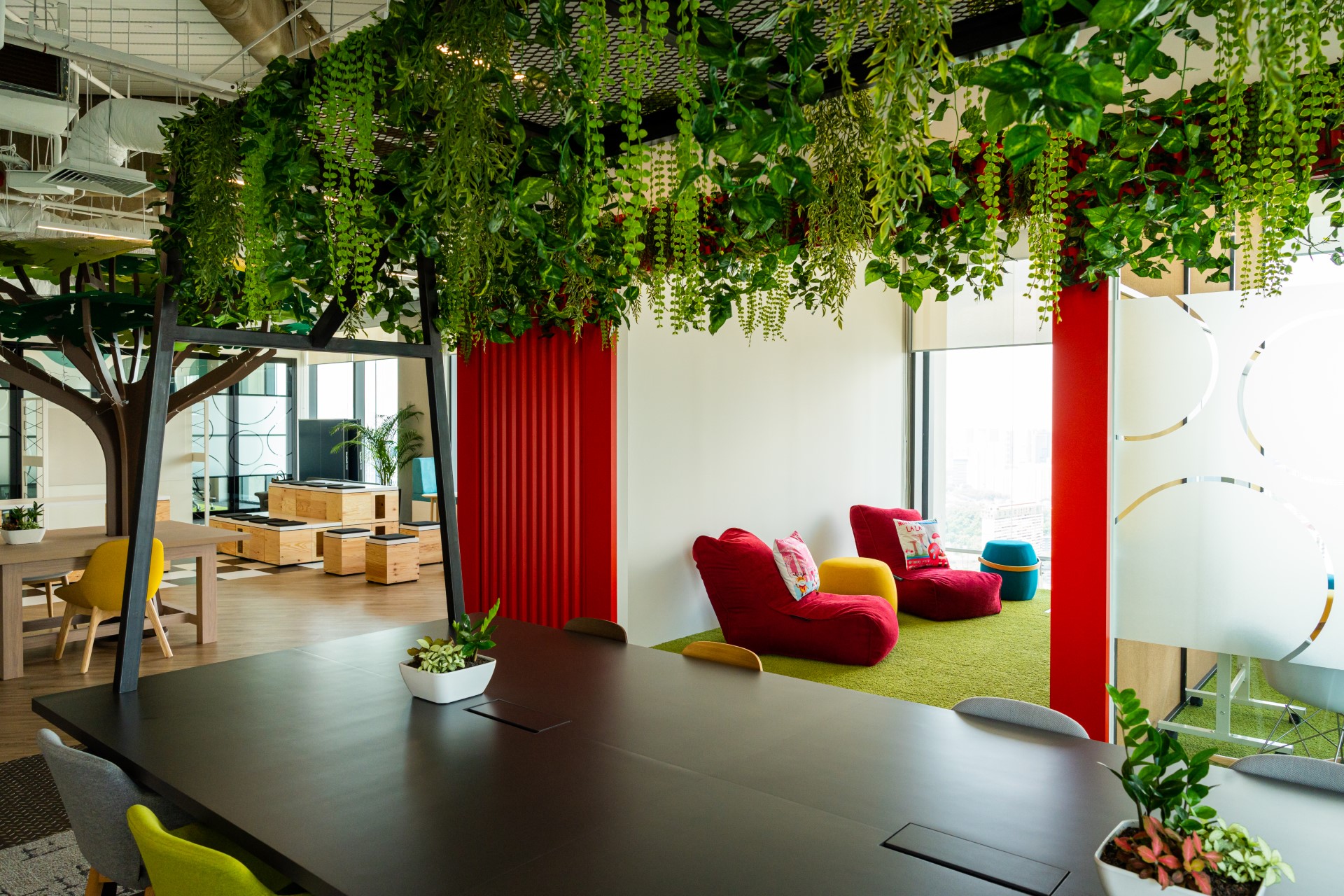
Defining Modern Biophilic Design
Modern biophilic design goes well beyond scattering pot plants around the office. Instead, it intertwines three core dimensions. First is the direct experience of nature—maximising daylight, offering views of greenery or water, integrating live plants and even gentle water features.
Second is the indirect experience, where natural textures (wood, stone, cork), colour palettes inspired by earth and sky, and organic patterns evoke nature’s essence. Third is the human spatial response, which considers how areas of shelter (refuge) and open vistas (prospect) affect our psychology, and how intuitive layouts reduce cognitive strain.
Importantly, these strategies can be tailored to any budget or footprint. From cost-effective natural materials and modular greenery to advanced glazing systems that harness daylight, the essence of biophilia lies in nurturing our evolutionary bond with the natural world.

Benefits of Nature-Infused Workspaces
Research continues to affirm the positive impact of nature-led environments on human performance. Employees with views of green spaces or access to indoor plants experience 10–25% boosts in concentration and cognitive function. Enhanced air quality from living plants reduces mental fatigue, while natural light regulates circadian rhythms, improving mood and energy levels.
Moreover, exposure to nature has been shown to lower stress hormone levels and blood pressure, translating into up to 15% higher well-being scores in staff surveys. Creative problem-solving thrives in settings that incorporate dynamic light and natural patterns, often yielding a 10% uplift in ideation. Health benefits also extend to reduced absenteeism—some organisations report as much as a 10% decrease in sick days when biophilic elements are introduced.
These measurable gains position biophilic design as an investment, not an expense—enhancing productivity and reducing turnover to offset any additional fit-out costs.
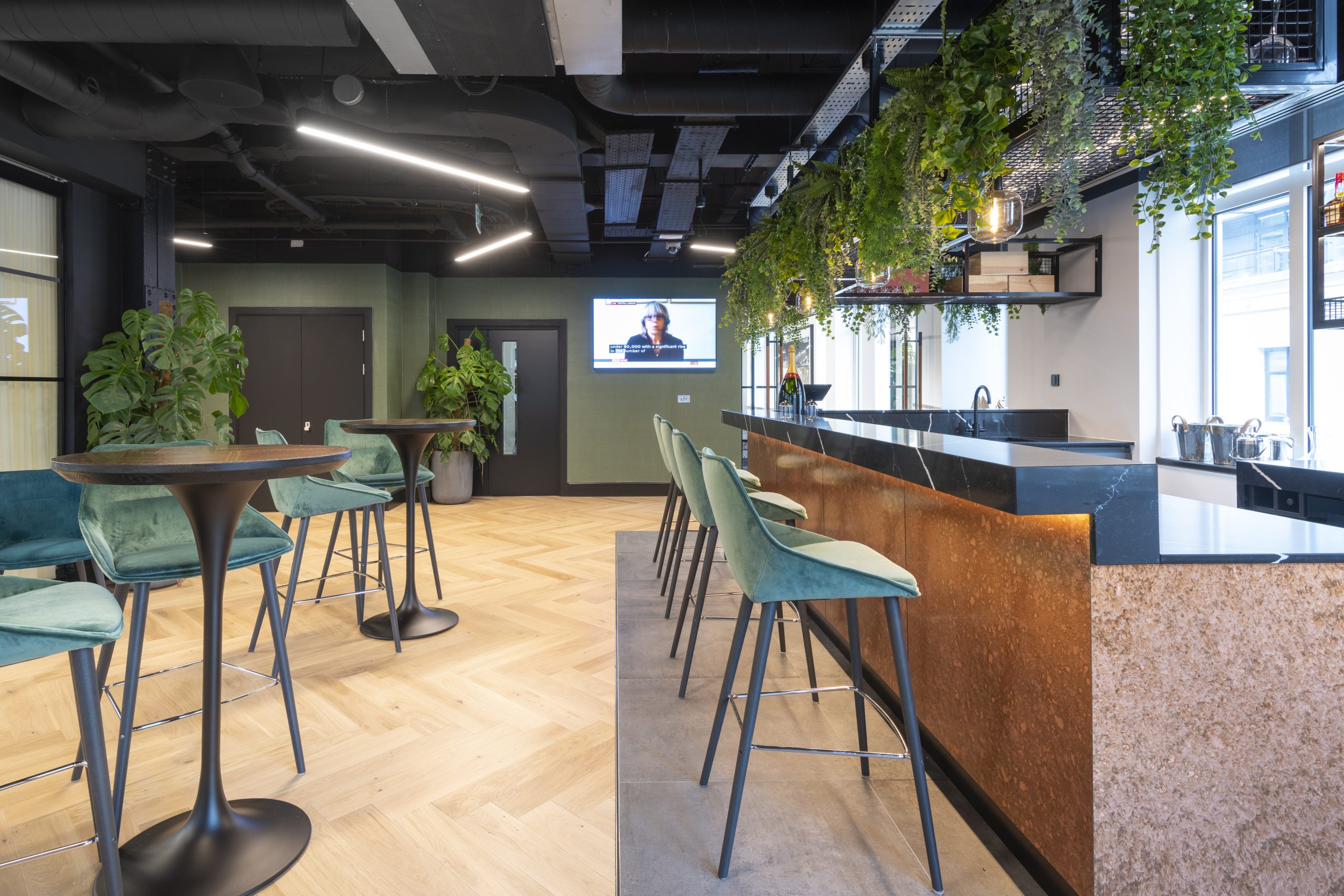
Core Pillars of Biophilic Office Design: Practical Applications
Bringing biophilia into the workspace involves a blend of direct and indirect strategies. To harness the direct experience of nature, layouts should be oriented to let daylight flood desks, with smart glass or shading systems managing glare.
Where possible, workstations should look out onto parks, courtyards or water features; rooftop gardens and terraces can offer fresh-air retreats. Living walls and clustered interior planting create lush micro-habitats, while small fountains or water walls add soothing soundscapes. High-quality ventilation, openable windows and advanced filtration ensure clean, fresh air circulates continuously.
In areas where real nature is limited, indirect experiences come to the fore. Select furniture and finishes in natural timber, stone and cork; employ colour palettes drawn from leaf greens, sky blues and earthy browns; and introduce biomorphic motifs—honeycomb screens, leaf-veined carpets or wave-inspired ceiling panels. Artwork and photography depicting natural landscapes reinforce the connection.
All these elements should be integrated into layouts that respect the human spatial response, offering a spectrum of prosocial and private spaces. Curved pathways guide movement, while cosy nooks provide refuge for focused work. Such designs make navigation intuitive and reduce mental clutter.
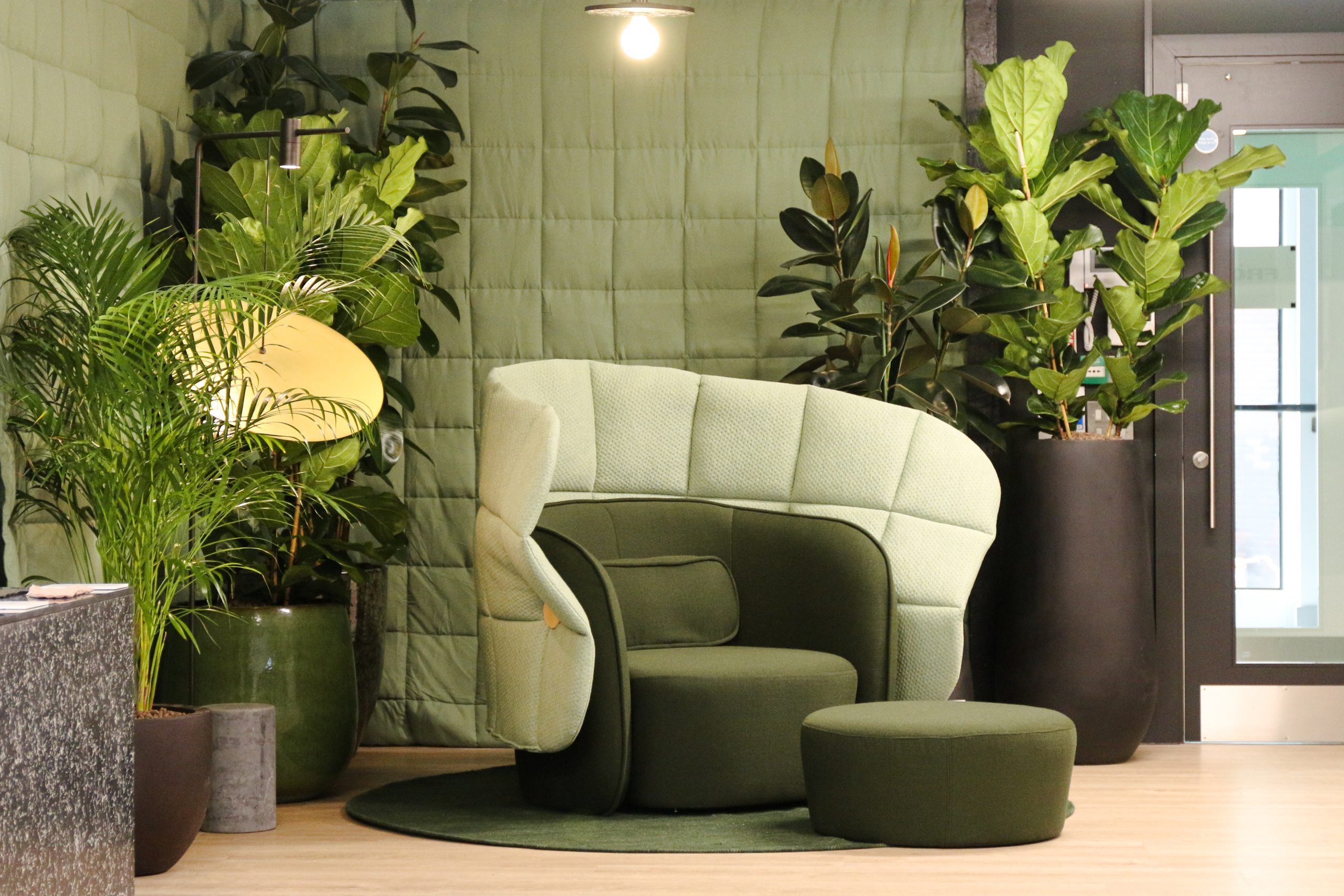
Key Elements and Strategies
A truly biophilic office caters to varied work styles and sensory needs. Collaborative hubs buzz with natural light, while enclosed pods framed by plants offer peaceful refuge. Acoustic comfort is achieved with moss-covered baffles, cork flooring and subtle sound-masking—perhaps the gentle murmur of a stream. Lighting schemes should transition from cool, energising whites in the morning to warmer hues in the evening, supporting circadian health.
Temperature and humidity control, alongside ergonomic furnishings, further enhance comfort. Paths that meander like woodland trails encourage movement, and locally sourced materials—stone from nearby quarries, timber from regional forests—reinforce a sense of place and community connection.
For guidance on holistic standards, refer to the BREEAM and evidence-based office design frameworks, which increasingly emphasise biophilic criteria.
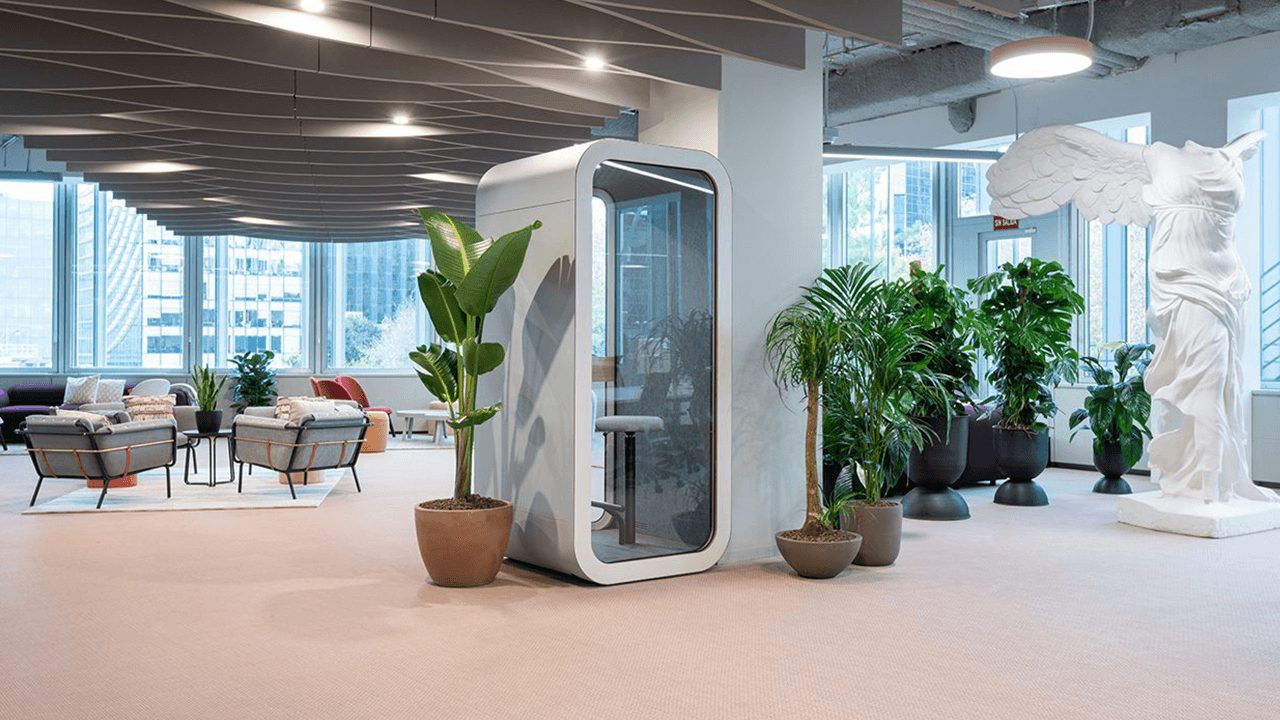
Biophilia’s Impact on Business Outcomes & ESG
Biophilic investments yield clear dividends. Productivity gains of up to 15% can outweigh modest front-end costs. Healthier, less stressed employees incur lower healthcare and absenteeism expenses. A nature-infused office also strengthens employer branding, making it easier to attract and retain talent and reduce recruitment spend.
Beyond financials, biophilia aligns with ESG objectives: sustainable materials and daylight harvesting contribute to environmental targets; employee well-being initiatives address social criteria; and transparent investment in healthy spaces bolsters governance ratings. To explore further, see our insights on ESG in the workplace.

Innovations and Trends in Biophilic Workplaces
Looking forward, biophilic design will integrate AI and IoT to create personalised environments—light cycles tuned to individual circadian rhythms, air quality optimised per zone, and adaptive soundscapes. Novel materials such as mycelium composites and algae-based panels will push sustainability boundaries, while regenerative designs aim to enhance local biodiversity.
In settings where real nature can’t thrive, immersive solutions—high-definition nature displays, VR micro-breaks and dynamic soundscapes—will supplement living systems. Emerging “neuroarchitecture” research will refine how specific stimuli influence brain states, enabling tailored spaces for focus, creativity or relaxation.
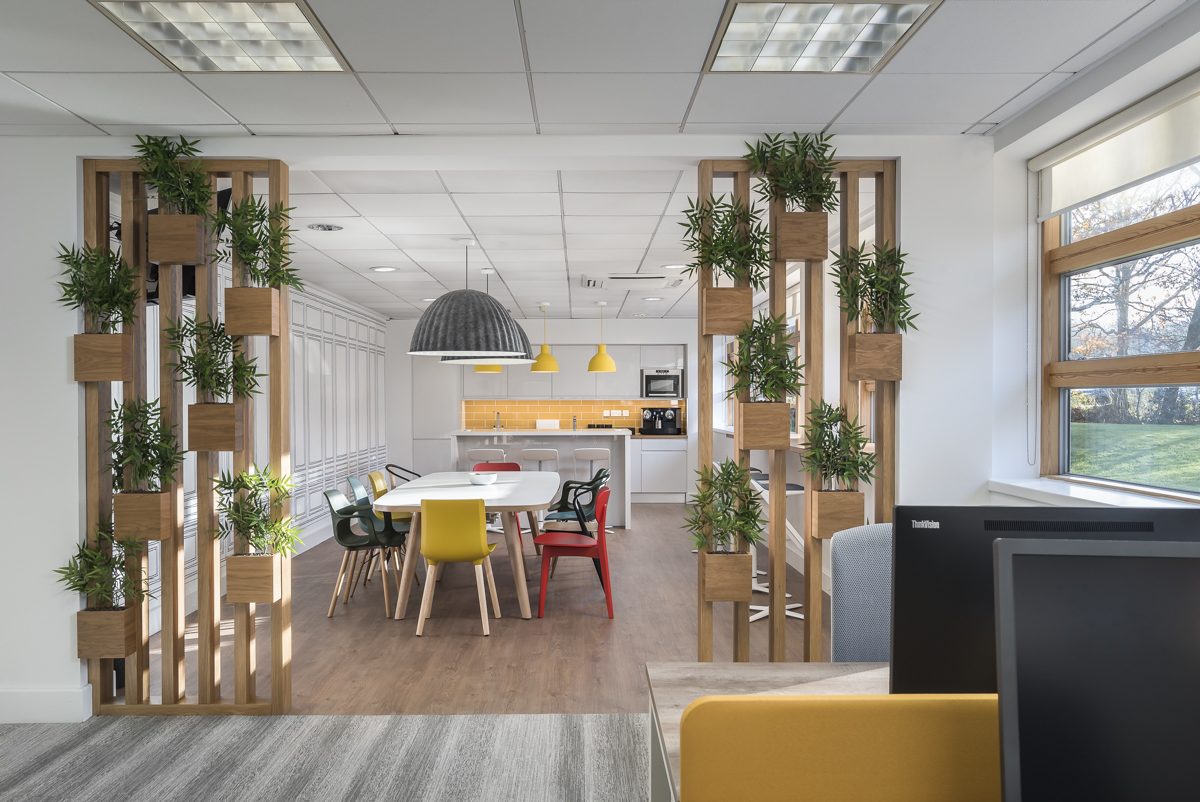
Adapting to Different Office Environments & Budgets
Biophilic principles are inherently adaptable. Large campuses might install expansive green walls, water plazas and wellness pavilions. Medium-sized firms can focus on daylight optimisation, curated plant features in communal areas and sustainable finishes.
Small businesses achieve impact with desktop plants, nature-inspired art and decluttering to maximise perceived space. Co-working operators often lead in biophilic innovation, offering varied natural zones to attract diverse clientele. Even legacy spaces can be revitalised through simple retrofits—modular planting systems, natural-tone lighting upgrades and cork flooring.
Implementing Biophilic Design Effectively
Budget constraints can be mitigated by prioritising high-impact, low-cost interventions: reposition desks for daylight, introduce a handful of resilient plants, and apply nature-based colour schemes. Spatial limitations call for vertical greening and indirect references through materials and patterns.
Maintenance solutions range from self-watering planters to professional care contracts or volunteer steward programmes. Securing stakeholder buy-in requires education—present the science of productivity and well-being, share case studies, and involve employees in design decisions to foster ownership.
Retrofits should respect existing mechanical systems, using plug-and-play green walls or portable acoustic pods to avoid complex upgrades. Above all, authenticity is crucial to avoid superficial “greenwashing.”
Actionable Steps for Transformation
The link between nature, well-being and performance is unequivocal. By weaving natural elements, patterns and processes into our work environments, organisations create spaces that support productivity and nurture holistic health. The benefits—from enhanced focus and creativity to reduced stress and improved retention—make a powerful case for adoption. Whether embarking on a new build, a major refurbishment or simply enhancing an existing space, the principles of biophilic design offer a flexible, impactful toolkit.
Embracing biophilia is an investment in your people, your culture and your company’s future success. By creating workplaces where individuals feel genuinely connected to nature, businesses can cultivate environments in which both employees and the organisation truly thrive. Here are three actionable steps:
- Begin with an audit of your space: map daylight levels, note view opportunities and survey employees on comfort and concentration. Define clear objectives—enhanced creativity, reduced stress or stronger collaboration—and launch pilot projects such as desk plants, a small living wall or revised paint palettes.
- Measure outcomes through feedback and usage patterns. Maximise natural light by rearranging layouts, and introduce a mix of plant species suited to your environment. When selecting furnishings, choose natural timber, stone or textiles, and weave biomorphic patterns into soft furnishings or artwork.
- Offer a variety of settings—collaborative hubs, focus pods and relaxation corners—each enriched with biophilic touches. Engage staff throughout, from plant selection to post-implementation surveys, to foster a sense of ownership. For larger initiatives, partner with designers experienced in sustainable office design and biophilic standards.
